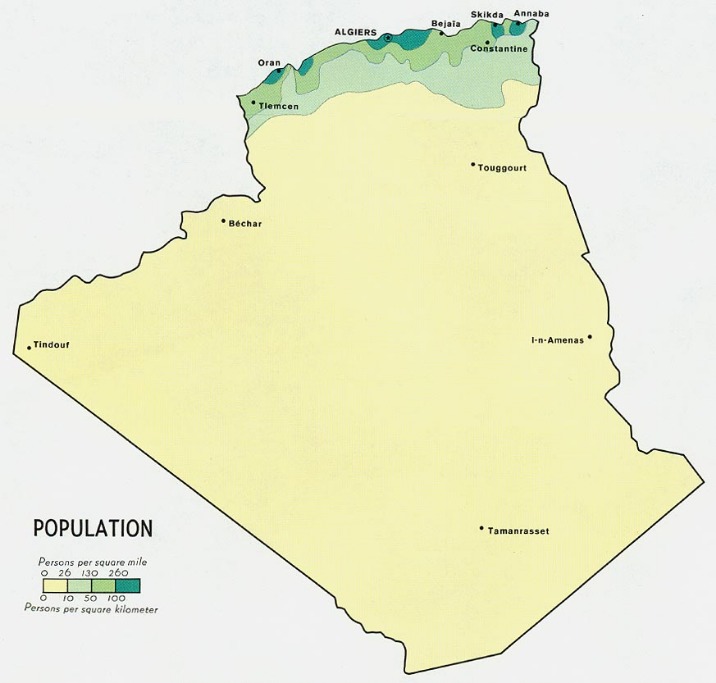Overview of Algeria’s Climate
Algeria’s climate is highly diverse, reflecting its expansive geography and varied topography. From the arid Sahara Desert in the south to the Mediterranean coastal region in the north, the country experiences a range of weather patterns and temperatures. This diversity influences the agriculture, ecosystem, and lifestyle of its inhabitants, making Algeria’s climate a fascinating subject of study.
Geographical Influence on Climate
Algeria’s climate is diverse, largely influenced by its expansive geographical features, including the Mediterranean coastline, the Atlas Mountains, and the vast Sahara Desert. The coastal regions enjoy a Mediterranean climate characterized by mild, wet winters and hot, dry summers, which supports lush vegetation and agricultural activities. Moving inland, the climate becomes more arid and continental, with higher temperature variations and less precipitation. The Sahara Desert dominates southern Algeria, where the climate is hyperarid, with extremely hot temperatures during the day and cooler nights. The geographical features of Algeria play a crucial role in creating this range of climatic conditions, shaping the country’s ecosystem and human activities across different regions.
Climate Zones in Algeria
Algeria’s climate is diverse and influenced by its vast size and varied geography, ranging from Mediterranean coastlines to interior deserts. The country experiences distinct climate zones that reflect its geographical features, resulting in a wide range of weather patterns throughout the year.
In the northern coastal region, the climate is Mediterranean, characterized by mild, wet winters and hot, dry summers. This zone supports lush vegetation and is ideal for agriculture. Moving inland, the climate gradually shifts to a semi-arid steppe, with reduced rainfall and more extreme temperature fluctuations. The Sahara Desert dominates the southern part of Algeria, featuring an arid desert climate with scorching daytime temperatures, cooler nights, and virtually no rainfall. This desert zone experiences some of the highest temperatures on the continent, particularly during summer months. Overall, Algeria’s climate zones create a rich tapestry of environments, from fertile coastal areas to arid desert landscapes.
Desert Climate in the Sahara Region
The Sahara region, particularly in Algeria, is characterized by its extreme desert climate. Known for its intense heat, low precipitation, and vast stretches of sand dunes, the Sahara creates a harsh environment that profoundly influences the local ecosystem and way of life. Summers are typically scorching, with temperatures soaring well above 40°C, while winters remain mild and dry, making the climate one of the most challenging in the world. Understanding this climate is essential to grasping the unique natural and cultural features of Algeria within the Sahara.
Characteristics of the Sahara Climate
The climate of Algeria is largely influenced by the vast Sahara Desert, resulting in a distinctive desert climate characterized by extreme temperatures and arid conditions. This climate significantly impacts the environment, agriculture, and daily life in the region.
- High temperatures during the day, often exceeding 40°C (104°F), especially in the summer months.
- Very low rainfall, with some areas receiving less than 50 millimeters annually, leading to extreme dryness.
- Significant temperature drops at night, with desert nights being cooler and sometimes chilly.
- Intense sunshine and clear skies throughout most of the year, contributing to the heat.
- Strong, dry winds, known as Sirocco, which can cause dust storms and reduce visibility.
Temperature Variations
The climate of Algeria, particularly in the Sahara region, is characterized by extreme temperature variations typical of desert environments. The Sahara Desert is one of the hottest and most arid areas on Earth, displaying significant fluctuations between day and night temperatures throughout the year.
- During the daytime, temperatures in the Sahara can soar to 50°C (122°F) or higher, creating scorching conditions that challenge both flora and fauna.
- Conversely, at night, temperatures can plummet sharply, sometimes dropping below 10°C (50°F) and in some cases approaching freezing in certain desert areas.
- This wide temperature range is a hallmark of desert climate, influenced by minimal cloud cover and low humidity, which allows heat to escape rapidly after sunset.
- Annual temperature variations also vary with seasons, with extremely hot summers and relatively milder winters, but nights remain cold year-round.
Precipitation Patterns
The climate of Algeria varies significantly across its vast territory, with the Sahara region characterized by an arid desert climate. In this area, precipitation levels are extremely low, often less than 50 millimeters annually, contributing to the harsh and dry environment. Precipitation in the Sahara is highly sporadic and unpredictable, occurring in the form of brief, intense showers or occasional rare rainfall events. This pattern results in long periods of drought, with some locations experiencing decades without significant rainfall. The scarcity of moisture influences the desert landscape, creating expansive dune fields, rocky plateaus, and sparse vegetation. Despite the minimal rainfall, some underground water sources and oases support limited flora and fauna, crucial for the survival of local communities and wildlife. Overall, the Sahara’s precipitation pattern is a defining factor of its extreme desert climate, shaping the region’s natural environment and human activities.
Mediterranean Climate in Northern Algeria
The Mediterranean climate in northern Algeria is characterized by hot, dry summers and mild, wet winters. This climate zone, found along the Mediterranean coast, supports lush vegetation and diverse agricultural activities. Its moderate rainfall and balanced temperatures create an ideal environment for various crops, making it a vital aspect of the region’s natural and economic landscape. Understanding this climate is essential to appreciating the broader climate patterns across Algeria.
Temperature Ranges
The Mediterranean climate in Northern Algeria is characterized by mild, wet winters and hot, dry summers. This climate type is typical for regions bordering the Mediterranean Sea and influences the local flora, fauna, and agriculture. Temperatures during the winter months generally range from 8°C to 15°C, providing mild conditions conducive to outdoor activities and crop cultivation. During the summer, temperatures can rise significantly, often reaching between 25°C and 35°C, with occasional heatwaves pushing temperatures even higher. This climate supports diverse ecosystems and is vital for the region’s agriculture, including the cultivation of olives, citrus fruits, and various vegetables.

Rainfall Distribution
The Mediterranean climate in northern Algeria is characterized by hot, dry summers and mild, wet winters. This climate is primarily influenced by the proximity to the Mediterranean Sea, which moderates temperature variations and provides significant moisture during the winter months. Rainfall distribution in this region is seasonal, with the majority of precipitation occurring from October to April. The coastal areas receive relatively higher rainfall compared to inland regions, leading to lush vegetation and fertile lands. As the distance from the coast increases, rainfall decreases gradually, resulting in drier conditions characteristic of semi-arid zones further inland. Overall, the rainfall pattern supports diverse agricultural activities and sustains the natural Mediterranean flora in northern Algeria.
Seasonal Variations
The Mediterranean climate in Northern Algeria is characterized by hot, dry summers and mild, wet winters. This climatic pattern is typical of regions bordering the Mediterranean Sea and significantly influences the local ecosystems and agricultural practices. The seasonal variations are marked by distinct changes in temperature and precipitation, with summer months experiencing prolonged periods of sunshine and minimal rainfall. In contrast, winter months bring cooler temperatures and increased rainfall, often leading to lush greenery and vibrant landscapes. These seasonal shifts create a balanced environment that sustains diverse plant and animal life, supporting the region’s unique biodiversity and agricultural productivity.
Climate in the Highlands and Mountainous Areas
The climate in the highlands and mountainous areas of Algeria is characterized by significant variations that influence the region’s environment and way of life. These areas experience cooler temperatures and more unpredictable weather patterns compared to the lowland regions, creating unique ecological zones. Understanding the climate of Algeria’s highlands and mountains is essential for appreciating the diversity and challenges faced by communities living in these elevated regions.
Altitude Effects on Climate
The climate in the highlands and mountainous areas of Algeria is significantly influenced by altitude, leading to distinct weather patterns compared to lowland regions. As elevation increases, temperatures tend to decrease, resulting in cooler temperatures year-round. Higher altitudes typically experience more precipitation, often in the form of rain or snow, especially during colder months. These mountainous areas, such as the Tell Atlas and Hoggar Mountains, can have microclimates that differ markedly from surrounding plains, supporting diverse ecosystems. The altitude effect in Algeria’s mountainous regions contributes to a variety of climatic zones, from semi-arid conditions at lower elevations to more temperate and even alpine climates at higher altitudes, impacting agriculture, settlement patterns, and biodiversity in these areas.
Weather Patterns in the Tell Atlas
The climate in the Highlands and mountainous areas of Algeria is characterized by cooler temperatures and higher precipitation levels compared to the surrounding lowlands. These regions experience a temperate or even cold climate, with snow common during winter months at higher elevations. The rugged terrain influences local weather patterns, leading to significant variances in temperature and rainfall over short distances. These areas often serve as water sources for the surrounding regions, supporting diverse flora and fauna adapted to the cooler climate.
The Tell Atlas, a prominent mountain range running parallel to the northern coast of Algeria, exhibits distinct weather patterns. It influences the Mediterranean climate of the area, resulting in wet winters and hot, dry summers. The mountains receive heavy rainfall during the winter due to moist Mediterranean air masses, leading to lush vegetation in the region. During summer, the influence of the Atlas diminishes, and weather becomes hotter and drier, contributing to the arid conditions prevalent in parts of the region. Overall, the Tell Atlas plays a crucial role in shaping the local climate, supporting agriculture and biodiversity in northern Algeria.
Snowfall and Temperature Fluctuations
The climate in the highlands and mountainous areas of Algeria is characterized by significant variations in temperature and snowfall, influenced primarily by altitude and geographic features. These regions experience cooler temperatures compared to the coastal zones, with temperatures decreasing further as elevation increases. During winter months, snowfall is common at higher altitudes, contributing to the area’s lush landscapes and water resources. Temperature fluctuations are quite pronounced, with warm summers and cold winters, which are more severe at higher elevations. These climatic conditions create a diverse environment that supports unique flora and fauna adapted to the variable climate, making the highlands an important ecological zone within Algeria.
Impact of Climate on Agriculture and Ecosystems
Algeria’s diverse climate significantly influences its agriculture and ecosystems, shaping the way natural and cultivated landscapes develop. With vast deserts, Mediterranean coastlines, and mountainous regions, the country’s climate variability impacts crop production, water availability, and biodiversity. Understanding these effects is crucial for developing sustainable strategies to adapt to climate change and preserve Algeria’s rich ecological heritage.
Crop Suitability in Various Climates
The climate of Algeria plays a crucial role in shaping its agriculture and ecosystems, influencing crop suitability and biodiversity across the country. As a nation characterized by a diverse range of climatic zones—from the Mediterranean coast to the arid Sahara desert—the impact of climate variability is profound on agricultural productivity and ecosystem health.
In the Mediterranean coastal regions, mild, wet winters and hot, dry summers create favorable conditions for crops like olives, citrus fruits, and vegetables. These areas support diverse ecosystems with lush vegetation and rich biodiversity. However, the limited rainfall and soil erosion pose challenges to sustained agriculture.
Moving inland to the semi-arid and arid zones, water scarcity and high temperature fluctuations significantly restrict crop choices, favoring drought-resistant plants such as millet, sorghum, and certain pulses. The Sahara desert’s extreme aridity and temperature extremes make agriculture nearly impossible without advanced irrigation techniques, which are often limited due to water resource constraints.
Climate change exacerbates these challenges by increasing temperatures, intensifying drought conditions, and reducing rainfall, particularly in vulnerable inland and southern regions. This shift threatens traditional cropping systems, reduces agricultural yields, and threatens native ecosystems adapted to specific climate conditions.
Overall, the varying climate zones of Algeria demand tailored agricultural practices and sustainable resource management to ensure food security and ecosystem resilience amid ongoing climatic changes.
Vegetation and Wildlife Adaptations
The climate of Algeria plays a significant role in shaping its agriculture and ecosystems, influencing the distribution and health of vegetation and wildlife. Due to its diverse climatic zones, ranging from the Mediterranean coasts to the arid Sahara Desert, Algeria experiences varied impacts on its natural and cultivated environments. In northern regions with a Mediterranean climate, moderate rainfall supports agriculture and lush vegetation, fostering diverse wildlife habitats. However, in the arid southern deserts, scarce water resources hinder plant growth and limit animal populations, leading to specialized adaptations for survival. As climate change induces fluctuations in rainfall patterns and temperatures, agricultural productivity faces challenges such as droughts and soil degradation, compelling farmers to adopt resilient crop varieties and water conservation techniques. Similarly, native flora and fauna have evolved unique adaptations to withstand harsh conditions, including drought-resistant plants and animals with efficient water usage. Overall, Algeria’s changing climate influences the delicate balance between ecosystems and agriculture, prompting a need for sustainable management and conservation strategies to preserve its rich biodiversity and support local livelihoods.”





0 Comments